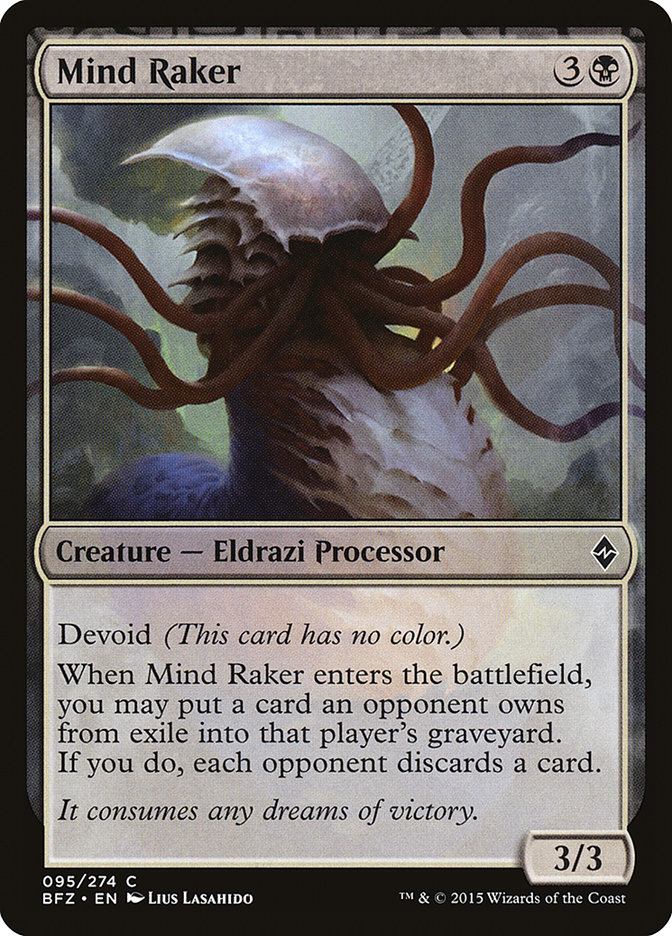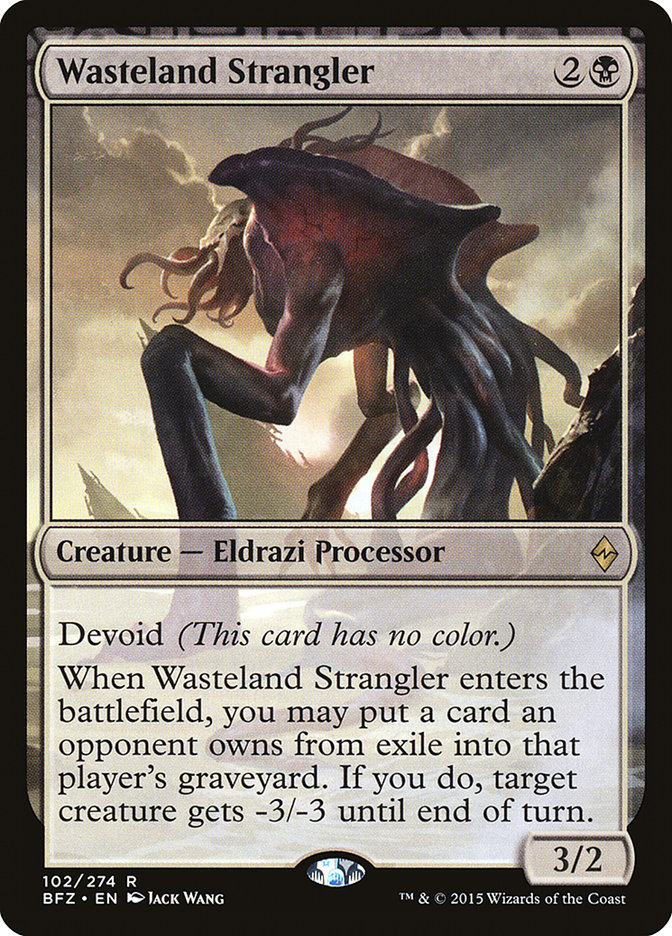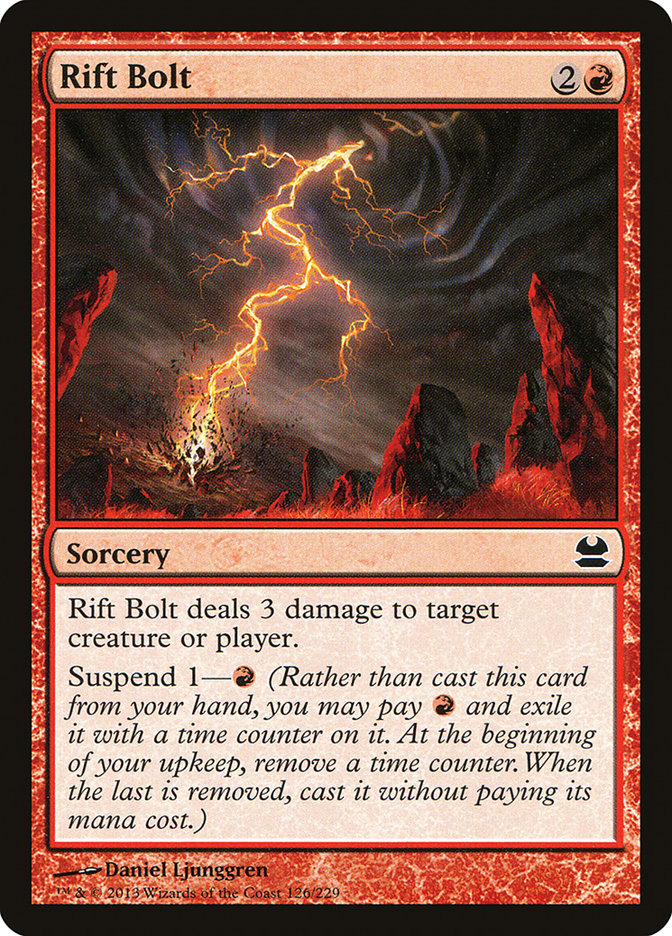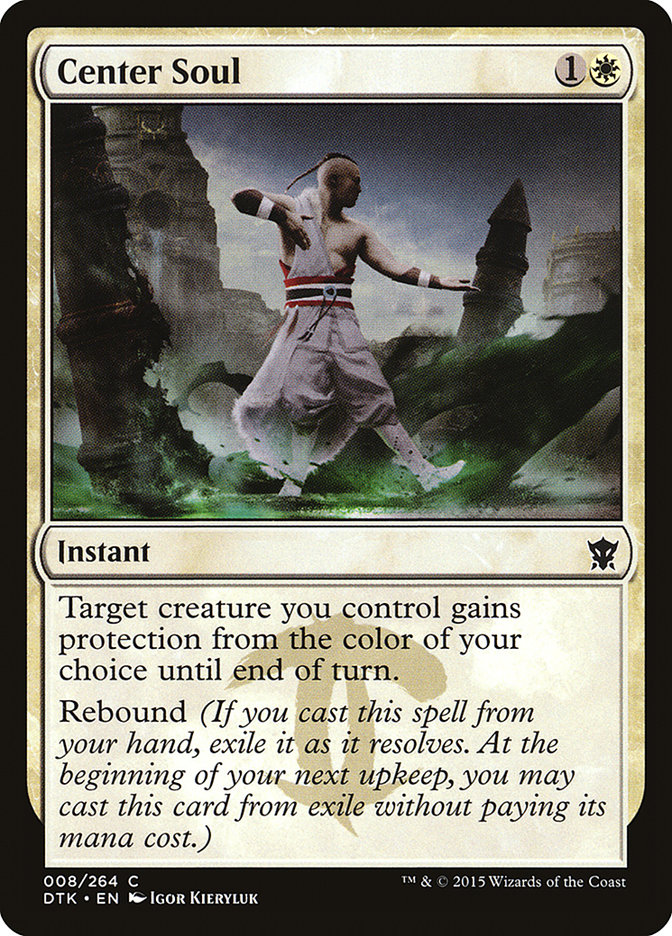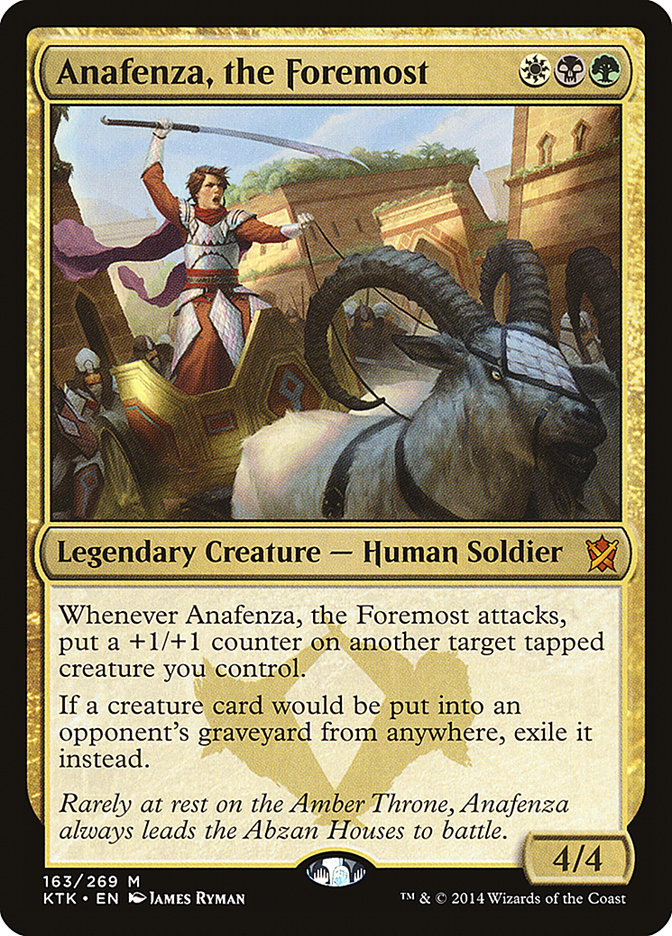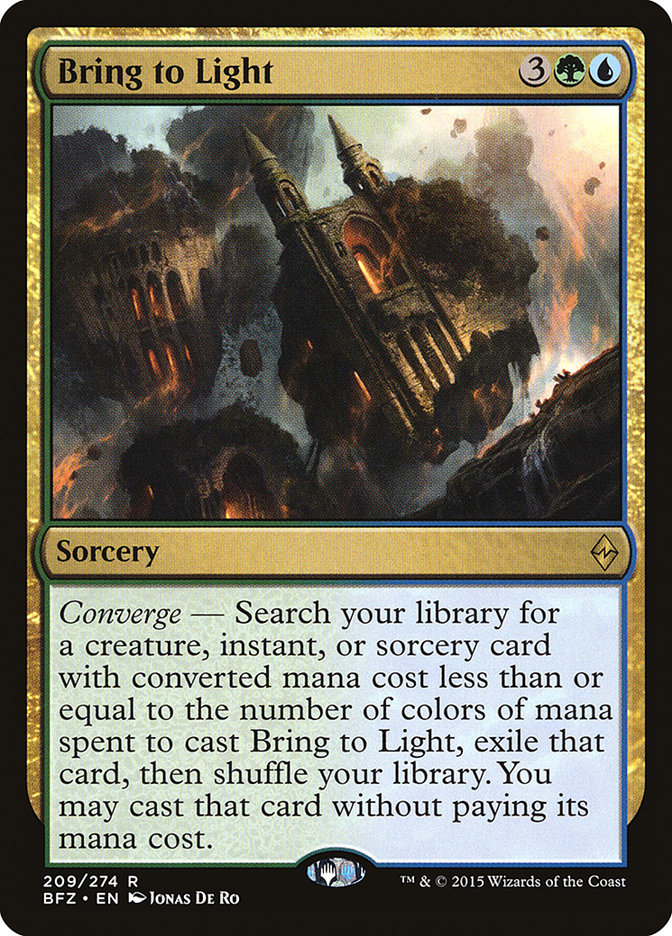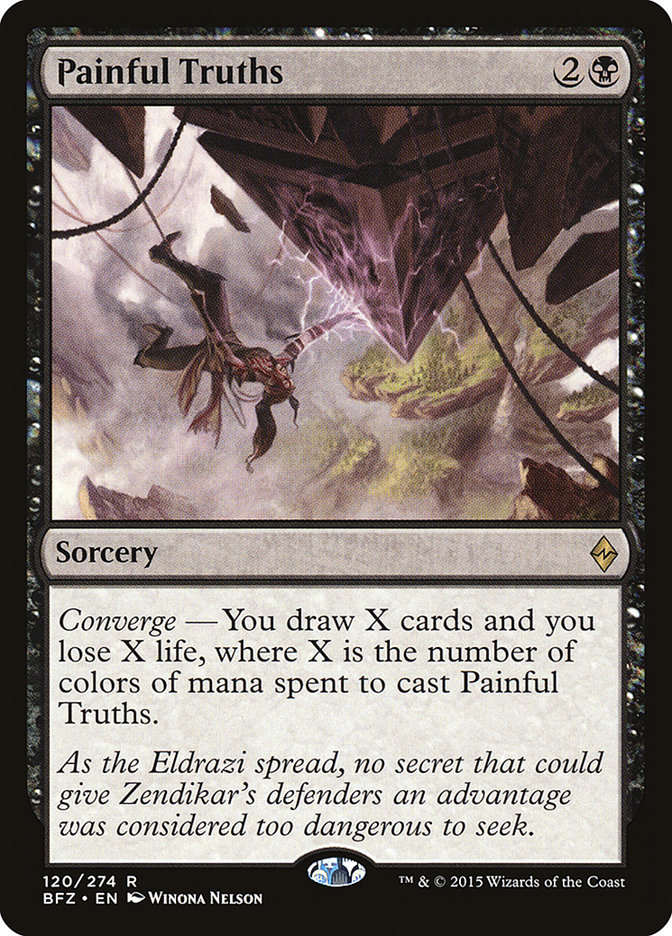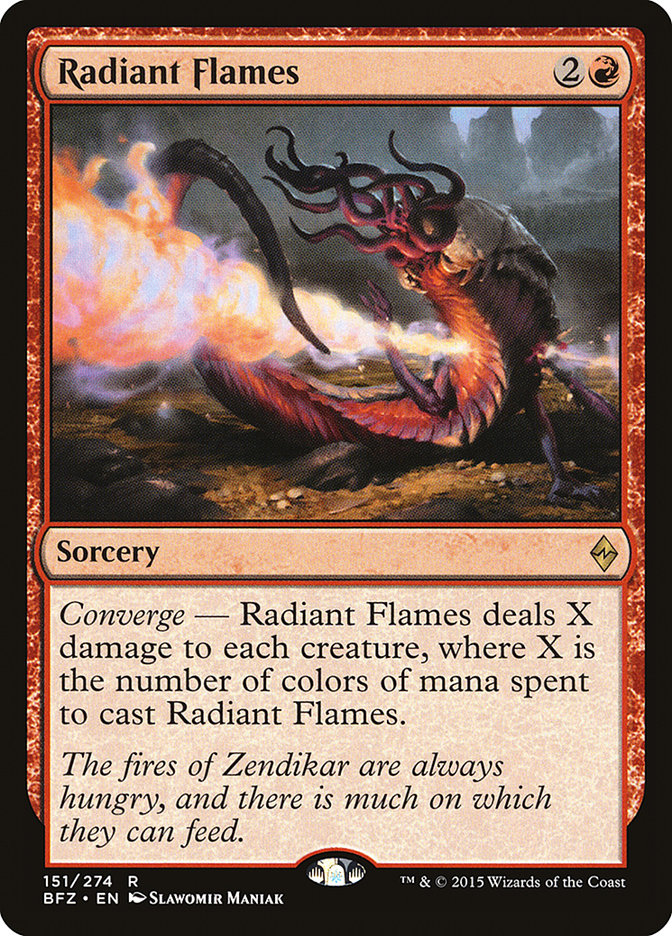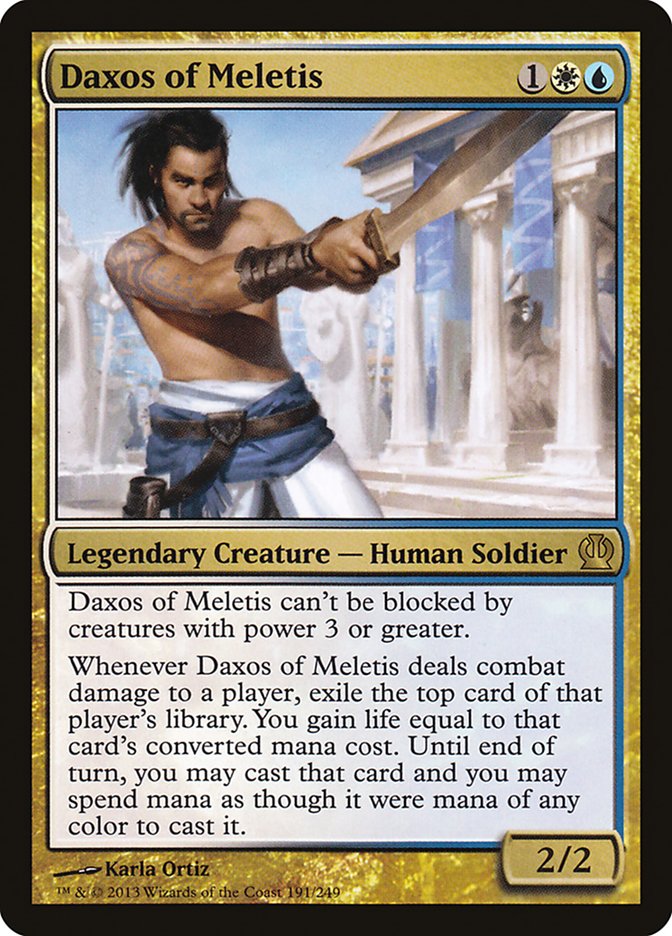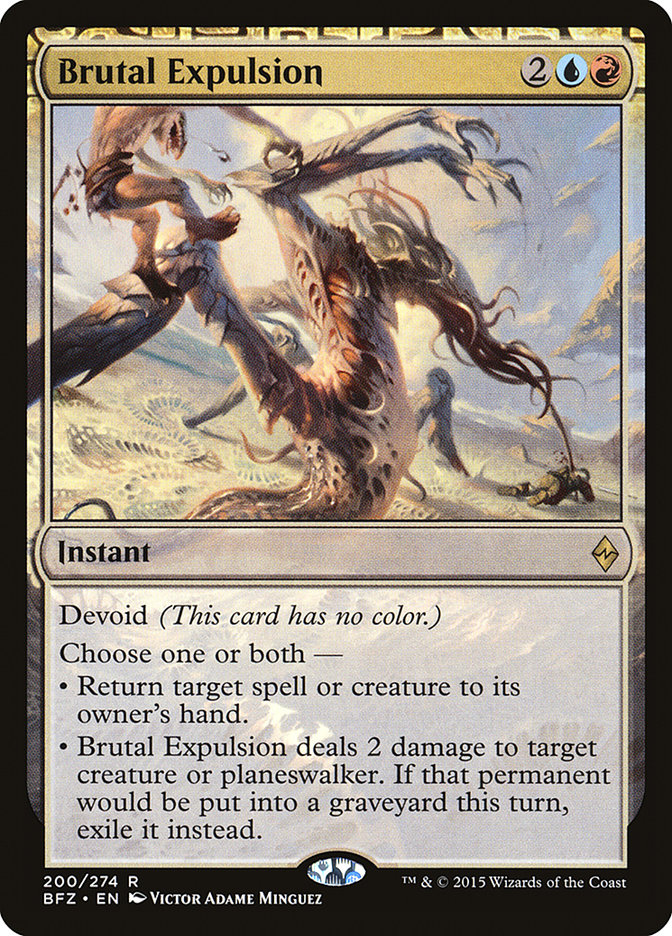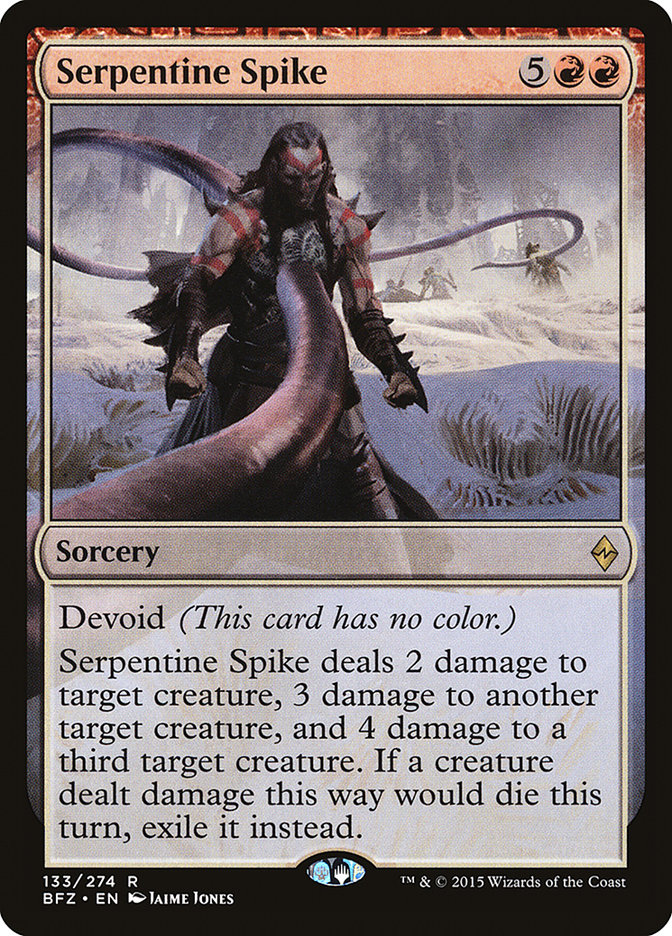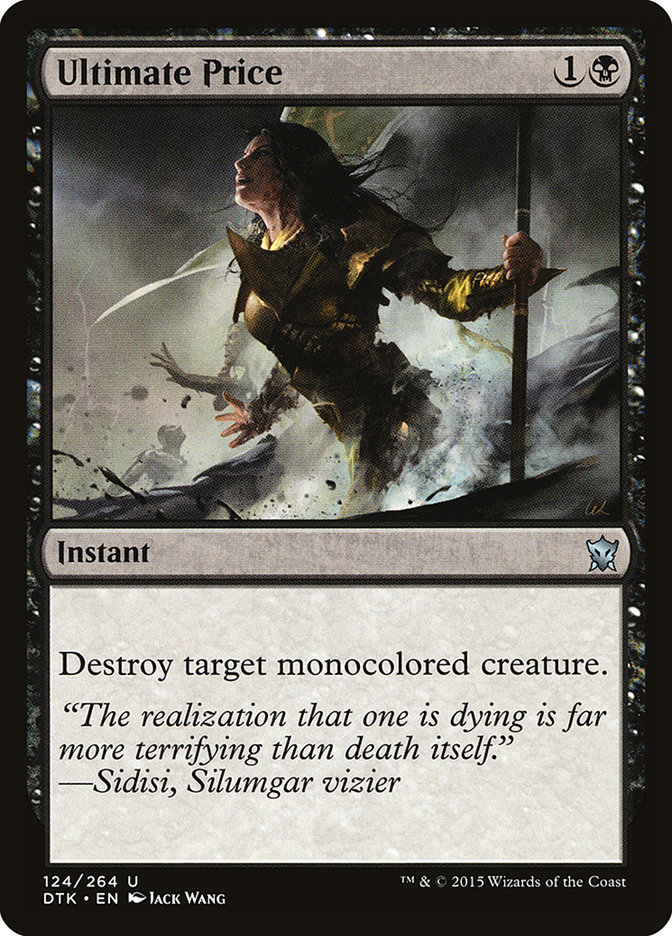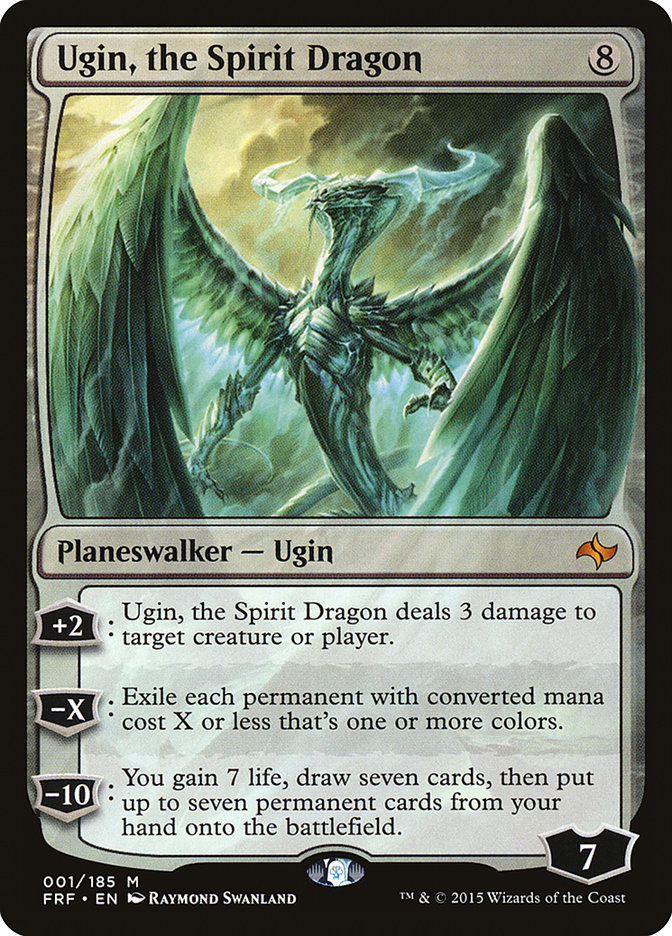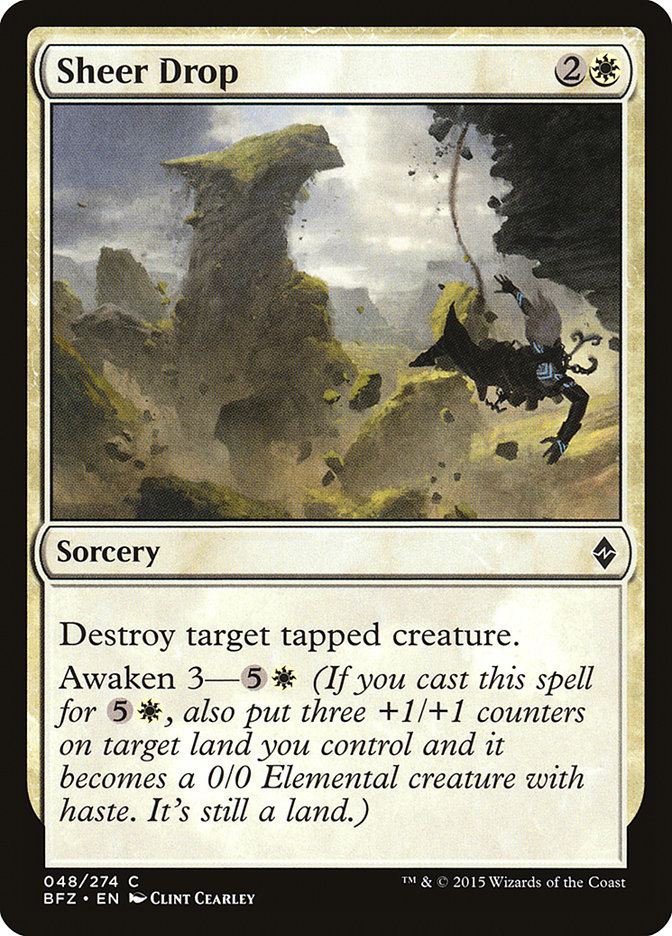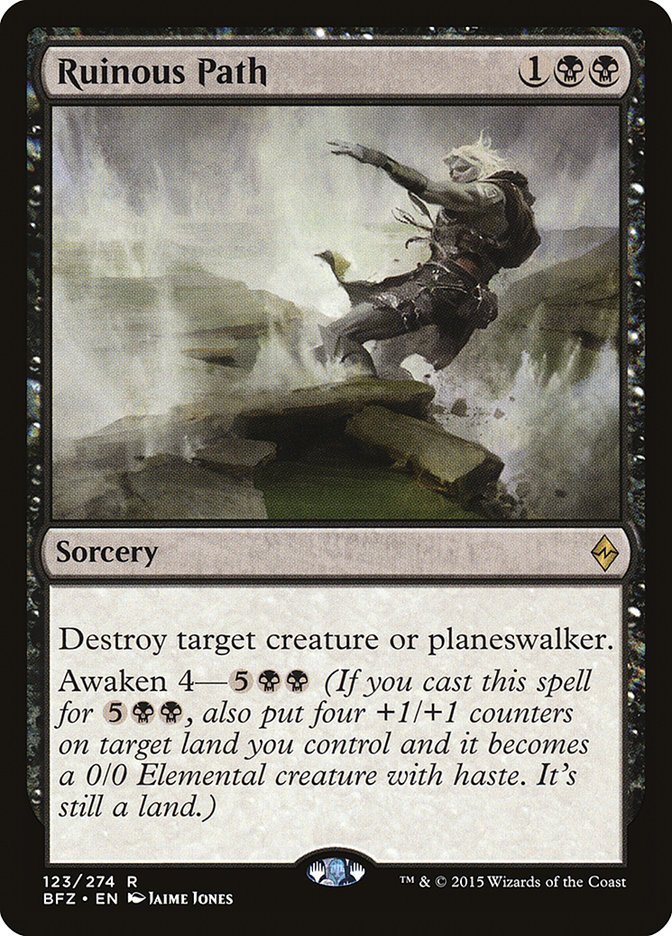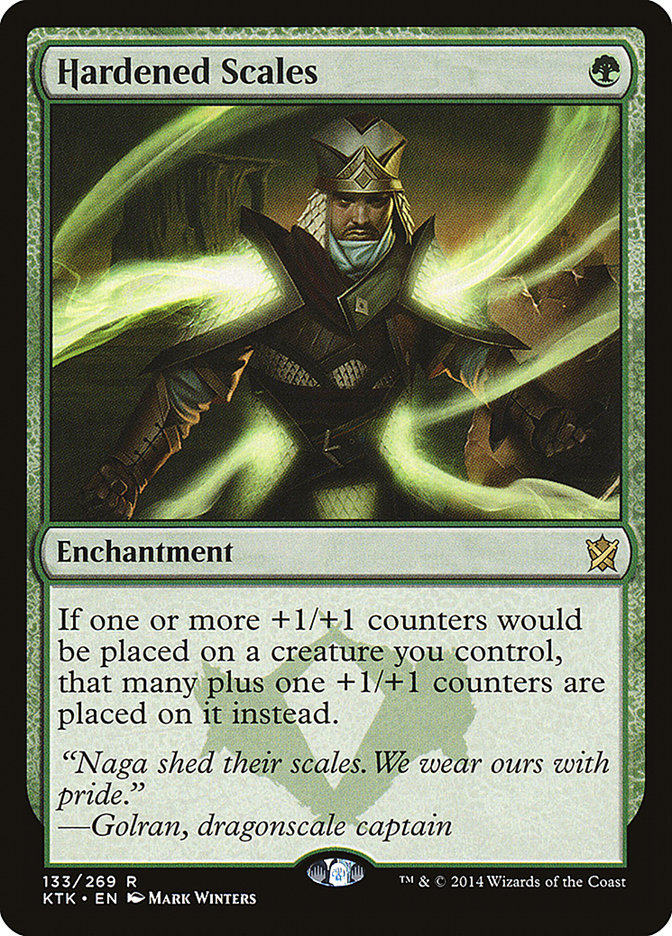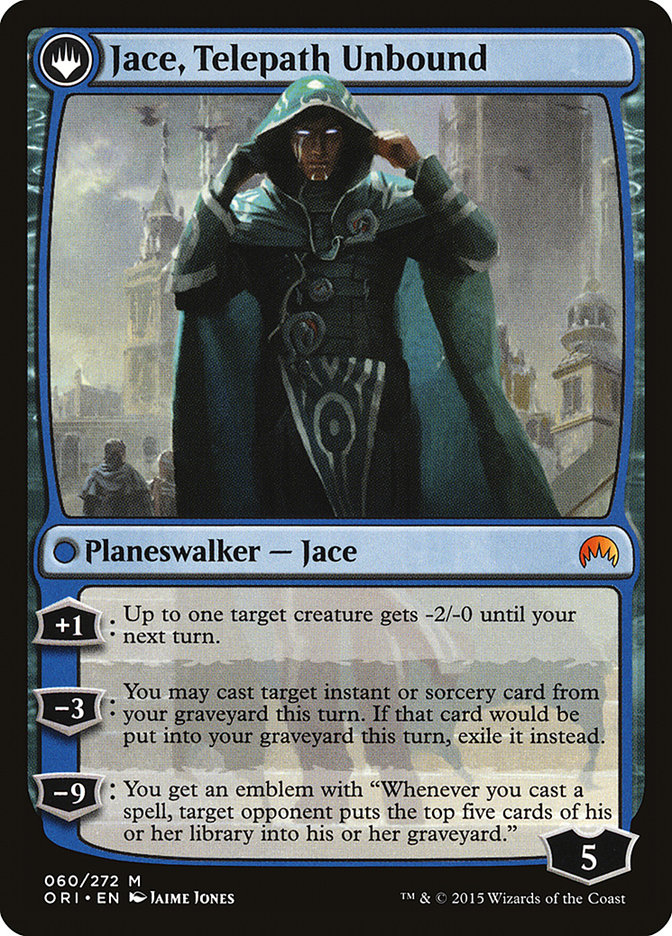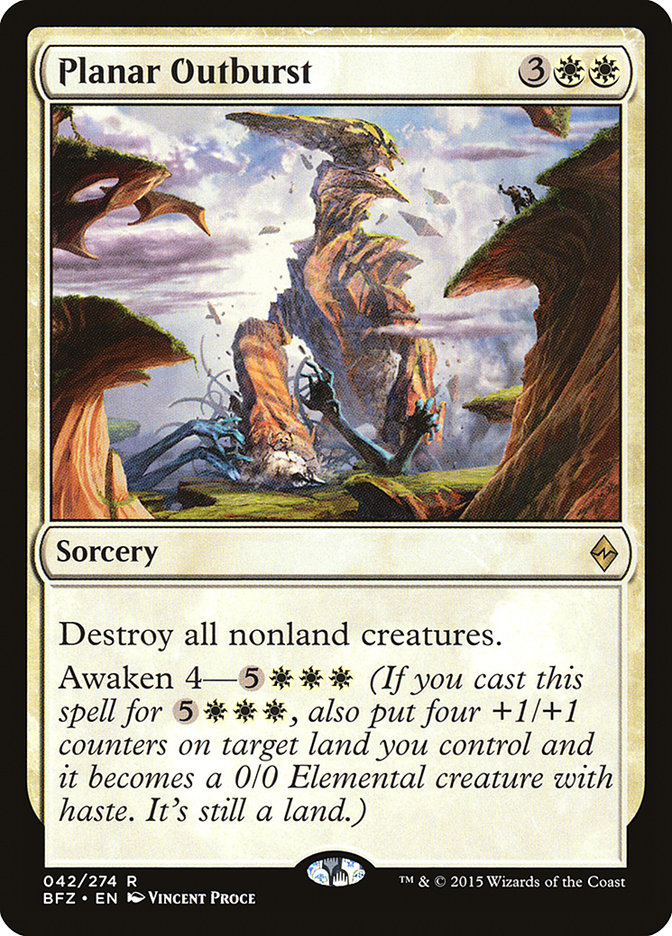Hello friends and welcome back to Ask a Judge! My name is Paul Baranay, but most people call me Bearz and you can too. For the past three years I’ve been
judging tournaments of all shapes and sizes, from Grand Prix Las Vegas to PPTQs in New York City. I love educating people about the rules and sharing my
love of Magic, so I’m very excited to take the helm of Ask a Judge. In this column, a special guest and I will answer your questions about tricky card
interactions, running Magic tournaments, and more! If you have a question, feel free to email them to [email protected]!
With Battle for Zendikar right around the corner, there’s one thing that’s on everyone’s mind: the Prerelease! A Prerelease is one of my favorite
times of the year. It’s our first opportunity to really play with the new set, and I love the process of discovering what cards are good, what’s better
than it seems, and how it all fits together. I also enjoy how the uniqueness of the Prerelease brings in players who attend very few tournaments. It’s this
kind of camaraderie and community that takes ordinary tournaments and really transforms them into events.
Another reason Prereleases are so special to me is because they played a pivotal role in my career. The first large event I ever judged was Pandemonium’s
big area Prerelease in Boston. The set was Return to Ravnica, so everyone was really excited and the crowds were quite big. But it was a
Prerelease and everything was quite casual, so it was a great environment to grow. I learned a ton, and all the judges I worked with were awesome.
One of those judges was Casey Brefka! You may have seen him wearing red as the Head Judge of the Standard Open in Worcester a few weeks ago, or at any
number of other events all across the country. Casey has worked so many events for SCG that he even has his own token!
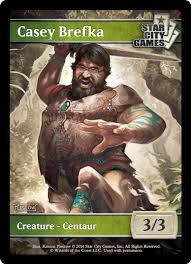
With all that in mind, it made perfect sense to invite Casey to be my special guest for this Ask a Judge. He’ll be helping me answer this week’s rules
questions — but first, let’s find out a little more about him!
Quick Questions with Casey
Why did you become a judge?
When I first came back to Magic in 2008 (right around the release of Alara Reborn), I hadn’t played since Mercadian Masques came out.
However, I found a really vibrant local community that had a lot of players willing to help me get back into the game, and I made a lot of friends really
quickly and started grinding PTQs and GPTs in the Boston area. And while I loved the atmosphere in large, highly competitive tournaments like that, I
realized two things: one, Magic was a really hard game, and long tournaments were an exhausting grind as a player; and two, I wasn’t very good at managing
the grind and keeping up with the metagame. I liked playing goofy theme decks that inevitably didn’t do well at tournaments and wound up getting
frustrated.
While I wanted to stop playing in those tournaments, I really liked going to them and being involved, so I ended up speaking to another friend of mine who
was looking to become a judge. I was quickly introduced to Eric Shukan, who was the local L3 at the time, and the Regional Coordinator for the Northeast.
From my experiences getting back into the modern game, picking up the rules necessary to become an L1 was pretty simple. I tested for L1 at a Nationals
qualifier in May of 2011, and then was immediately hired by my local store to be their store judge. I got the bug pretty quickly after that, and I was
promoted to L2 in October of that year, and then finally to L3 in June of 2013. I’ve enjoyed every minute of it, and consider myself lucky to have found
such a great community of people who love this game as much as I do.
What’s your favorite card from Battle for Zendikar?
Since I’m a huge fan of wonky combos, I really like the card Retreat to Coralhelm. Being able to untap a creature whenever you landfall seems pretty
interesting, especially in Modern, when you also have the card Ruin Ghost available, that conveniently taps to blink a land you control. I think I saw a
combo on Reddit using those two cards and a Hedron Crab to mill out your opponent. I’m sure there are a lot of other ways to abuse that as well, especially
in Commander.
—-
Thanks, Casey! Casey was a fixture of the Boston Magic scene for years, but recently left for Nashville to pursue his musical career. Massachusetts’ loss
is Tennessee’s gain!
The rest of this article will cover some rules questions about four of the major mechanics in the set: Processors, Converge, Devoid, and Awaken. We’ll also
talk a little about the Prerelease itself and the new Vancouver Mulligan rule. Let’s get right to it!
New Mechanics: Processors
Can a card exiled by something like Stasis Snare be processed? What happens to it?
You can process any card that your opponent owns and is in exile. It doesn’t matter how it got there. It could have been ingested, delved, exiled by Abzan
Charm or Utter End, affected by Brutal Expulsion, or many other possibilities.
Once you process a card, anything that was tracking it loses, well, track of it. If I exile your Siege Rhino with Stasis Snare, then process your Rhino,
removing my Stasis Snare won’t return your Rhino to the battlefield anymore. This might seem unfair; I think that’s the point.
What happens if you Process a suspended spell, like Rift Bolt?
Same deal as above: the Rift Bolt will be put into the graveyard. It won’t have any time counters, and it won’t be suspended anymore. Sorry not sorry,
Jhoira.
Okay, but how about spells with rebound?
You’re very persistent, aren’t you? Processing a card with rebound will prevent it from being cast for free. I guess the Eldrazi aren’t very fond of
Narset.
What happens if I control Anafenza, the Foremost? Can I still Process my opponent’s creature cards?
The Processors will give you points for effort. As my friend Alli Medwin says, the Eldrazi may be alien space monsters from beyond time and space, but
they’re considerate alien space monsters.
Let’s make this more concrete with an example. You control Anafenza, the Foremost; I have an Alpine Grizzly in exile. You cast Mind Raker and want to use
its ability to make me discard a card, so you put the Alpine Grizzly into my graveyard. But! Anafaneza steps in and exiles the Grizzly instead. It sounds
strange, but it totally works.
Basically, instead of putting the Alpine Grizzly into my graveyard, you’ve re-exiled it. Even though it didn’t move zones, it’s actually a new object as
far as the game is concerned. Moreover, the game saw you attempt to put it into my graveyard, which is good enough for your Processor. I’ll still
be forced to discard a card.
A few important notes along these lines:
– If a single Processor requires you to process multiple cards, you still need to choose that many cards from your opponent’s exile, even with Anafenza,
the Foremost on the battlefield. For example, Blight Herder demands that you process two cards to make any Scions; because you have to move both cards at
once, Anafenza doesn’t let you cheat.
– Other effects that replace cards being put into graveyards with being exiled, like Rest in Peace and Leyline of the Void, work the same way as Anafenza.
– Spells and abilities where you process cards as a cost, like Processor Assault and Void Attendant, work the same way as abilities where you process cards
on resolution.
New Mechanics: Converge
I activate Pyromancer’s Goggles to add R to my mana pool, then cast Radiant Flames for WBR. What happens?
The painful truth is that the Goggles do nothing! You didn’t spend any mana to cast the copy, so it won’t deal any damage at all. This is true for all converge spells, no matter how the copy is created.
I attack with Daxos of Meletis and exile Radiant Flames. Can I spend WWW “as though” it were GWR, and deal 3 damage to everything?
Unfortunately, Daxos doesn’t work very well with converge spells. When you use Daxos spend mana “as though” it were mana of any color, you can ignore
paying the specific colors in the spell’s mana cost, but that’s it. For all other purposes, the game sees what mana you really spent. In this case, you
only spent one color of mana, so you’ll get a very tiny flame dealing one damage to all creatures. I’m sure you’ll find other ways for him to shine,
though.
New Mechanics: Devoid
I have a Karn, Silver Golem Commander deck. Can I play cards with devoid in that deck since they’re colorless?
While it’s true that both Karn and the Eldrazi are colorless, it doesn’t mean that they get along, especially in Commander. Commander cares about something
called a card’s “color identity,” which is distinct from its color. For the purpose of color identity, the colors of mana in the mana costs of devoid
spells are taken into account. Unfortunately (or perhaps fortunately for Karn), that means that he’s not allowed to be friendly with any of the devoid
spells. Despite being colorless cards, they all have a color identity that is one or more colors.
Can I destroy a creature with devoid with Ultimate Price? Can I exile a Forerunner of Slaughter with Ugin, the Spirit Dragon?
No. A mono-colored creature is a creature that has exactly one color. Any card with devoid is colorless, so it has zero colors. Similarly, Eugene can only
exile permanents that have one or more colors; Devoid makes the Eldrazi immune to his –X ability. So, hmmm, that’s weird. I wonder how he imprisoned the
Eldrazi in the first place…?
New Mechanics: Awaken
Let’s say I have a Shambling Vent. I awaken my Vent with something like Sheer Drop and put three +1/+1 counters on it. How big is the Shambling Vent?
What’s its power and toughness if I animate the Vent with its own ability?
After Sheer Drop resolves, your Shambling Vent will be a 3/3 colorless Elemental creature-land. If you activate the Vent’s last ability, it’ll become a 5/6
white and black Elemental creature-land with lifelink (after the current turn ends, it’ll go back to being a colorless 3/3 without lifelink.)
This is because awaken and the Vent’s own ability each set the land’s “base” power and toughness. Whichever effect was created most recently will overwrite
the others. Once we’ve figured out its base power and toughness, we apply other effects, like boosts from counters.
What if I’ve animated my Shambling Vent (with its last ability), and then awaken it?
That wouldn’t work out great for you. Its base power and toughness will be 0/0 until the end of turn, so you’ll end up shrinking it for a while. It’s still
have lifelink, though.
What happens if I awaken a Dryad Arbor?
Dryad Arbor’s printed power and toughness are 1/1, but awakening it will set its base to 0/0. The effect from awaken is more recent, so we use that (I
guess the awaken spell backfired and it got sleepy). The Dryad Arbor’s final power and toughness will simply be equal to the number of +1/+1 counters on
it, plus or minus any other effects.
I have Hardened Scales out, and I awaken a land that’s not currently a creature. Does it get an extra counter?
No. The rules for awaken clarify that you put counters on the land, then it becomes a creature. The order matters. Since you put counters onto a
land, not a creature, you won’t get a bonus from Hardened Scales. If you awaken the same land multiple times, though, you’ll get a little more oomph out of
successive awakenings. One extra +1/+1 counter of oomph, to be precise.
Can I use Snapcaster Mage to Flashback and awaken Coastal Discovery?
Unfortunately not. Flashback and awaken are both alternative costs, and you can only apply one alternative cost to a single spell. Casting a card from the
graveyard is only possible if you pay the Flashback cost, so that prohibits you from also applying the awaken cost.
I target the Coastal Discovery in my graveyard with Jace, Telepath Unbound’s -3 ability. Can I cast Coastal Discovery for its awaken cost?
Yes!
But didn’t you just say…
It’s true that you can only apply one alternative cost to a spell. However, Jace’s ability doesn’t give it Flashback, or create an alternative cost at all.
Rather, Jace simply gives you permission to cast Coastal Discovery from an unusual zone (your graveyard). So you can still cast Coastal Discovery for its
awaken cost on top of that.
I cast Planar Outburst for its awaken cost, targeting one of my Plains. In response, my opponent casts Scour From Existence on that Plains. What happens?
If a spell or ability requires targets, but all those targets have become illegal when that spell tries to resolve, the game rules counter that spell and
none of its effects occur. This is precisely what has happened here. Planar Outburst’s only target is now illegal, so it’s countered. You won’t destroy any
non-land creatures. Zendikar’s wrath has been prevented, but I wouldn’t blame you if you had an outburst of your own.
Expeditions!

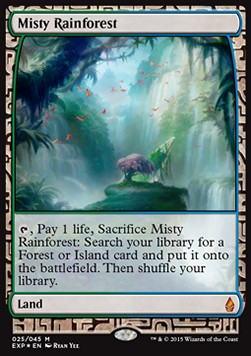
I opened an Expedition in my Sealed pool! What do I do now?
First off, congratulations on opening a shiny, expensive piece of cardboard! Second, I hope you brought sleeves because any Expeditions that you
open in a Sealed pool (Prerelease or otherwise) are legal for play in that Sealed event. They are considered part of your pool and you can use them in your
deck if you want! Maybe they’ll help you cast some converge spells…
How do Expeditions work in Draft?
Similarly, Expeditions are legal to play in any Booster Draft where they are opened. They are considered part of the pack in which they are opened, so in
order to have it in your pool, you must use your pick to select it.
What happens if I’m playing in an event with a deck swap, and I’ve opened an Expedition? Can I drop from the tournament and keep it?
Yes. Most Competitive REL Limited tournament require participants to register a card pool first, and then swap those pools with other players as a way to
verify that the cards in the pool are the cards that were actually opened from those booster packs. Any time before the swap, if you would prefer to leave
the tournament and keep the cards that you are registering, all you have to do is notify a judge that you would like to drop. The judge will make sure that
you are removed from the tournament, and you can go ahead and leave with your cards (or stay and play in side events!).
Are shocklands and all the fetchlands now legal in Standard?
No. Zendikar Expeditions are their own set, which isn’t part of Standard. You can play cards that are legal for Standard anyway, like the Battle lands and
the allied-color fetchlands, but the Expeditions don’t add any extra cards to Standard.
Prerelease Logistics
What will I get in my Prerelease box?
Every box will have six Battle for Zendikar booster packs; a Battle for Zendikar foil, stamped Prerelease Promo Card; a Battle for Zendikar spindown life counter; and a Battle for Zendikar deckbuilding guide and story insert!
Can I ask for help with deckbuilding at the Prerelease?
You sure can! Prereleases are meant to be fun and welcoming events that focus on learning and playing with the new set, so feel free to ask your neighbors
for help. If you’re a more experienced player, be a good citizen of your store and assist someone who’s struggling!
Do I choose a color or a faction for this Prerelease?
No. Everyone gets the same kind of box. There could be anything in the box. It could even be an Eldrazi!
Can I play with my promo card?
Sure!
Vancouver Mulligan
How does the Vancouver Mulligan work?
If you’ve ever taken a mulligan in a sanctioned match of Magic, then you already know what I’m going to say in this paragraph. At the start of the game,
each player draws cards equal to that player’s starting hand size (which is usually seven cards). Then, in turn order, each player chooses to either keep
those cards as their opening hand or takes a mulligan. To take a mulligan, the player shuffles those cards back into their library, then draws a new hand
with one fewer card. Each hand drawn this way can then be kept or mulliganed, with each subsequent mulligan drawing one fewer card each time, until each
player has kept an opening hand.
The new rule only has an effect if one or more players has opted to take a mulligan. After each player has kept an opening hand, each player who has an
opening hand that is smaller than their starting hand size, in turn order, may scry 1. (To scry 1, a player looks at the top card of their library and may
choose to put that card either on the top or bottom of the library.)
Some important things to consider:
– If multiple players mulligan, the scry 1 is taken in turn order. In general, this means that if both players in a two-player game take a mulligan, the
player who takes the first turn will scry 1 first. When they’re done, the other player will scry 1.
– Regardless of how many mulligans you take, you only get to scry 1 once. It’s not a “once per mulligan” thing.
– In multiplayer formats, the first mulligan is “free,” meaning the player draws the same number of cards as their starting hand size. In those games,
those players would need to take a second mulligan in order to be able to scry 1 (since their opening hand would still be equal to their starting
hand size after only one mulligan).
– All choices to scry 1 must be made before any “opening hand” abilities of cards are used. So you’ll have to scry before knowing whether your opponent has
a Leyline of Sanctity, for example.
What happens if I mulligan to six, keep my new hand, then forget to look at the top card?
It’s on you to remember to scry. The judge program will put out more information about this in the near future, but basically, if you forget, you’ve missed
it. So don’t forget! (At Regular REL events like a Prerelease, the judge has some flexibility to allow a late scry in the interest of education.)
Is the Vancouver Mulligan just for the Prerelease?
Nope! It’s now the lay of the land for all sanctioned tournaments going forward.
—
That’s all we have time for today! Make sure to check back in again next time, when we dive into some specific card interactions. Special thanks to Casey
for being my special guest!
If you have any questions for future articles, please leave them in the comments, or drop me a line at [email protected]!

